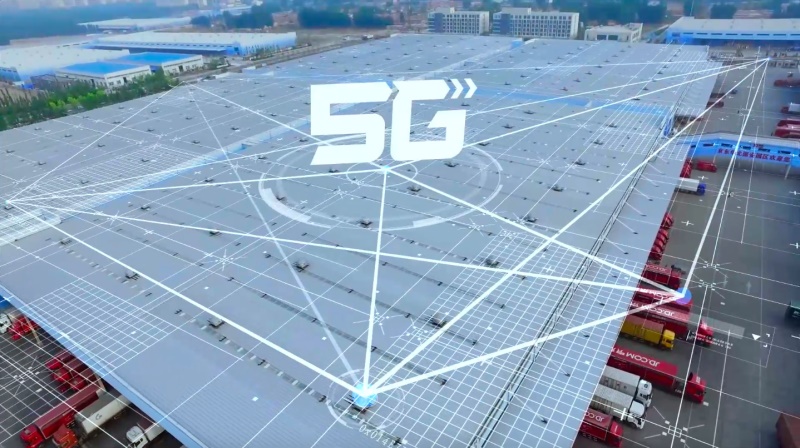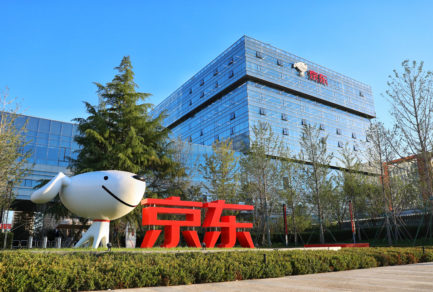Nov 5, 2019|
Open Platform for Digital Supply Chain: The Next Wave of Efficiency
By Zhenhui Wang, CEO of JD Logistics
Nearly any company you ask will recognize the importance of having agile, efficient operations, but the role supply chain plays in this is often overlooked.
The fact of the matter, though, is that there is no denying the importance of a good supply chain when it comes to a successful business. The numbers are particularly telling.
Deloitte found that 79 percent of companies with high-performing supply chains achieve revenue growth greater than the average of their respective industries, while only 8 percent of companies with less capable supply chains report above-average growth.
What all this means is that to win in the face of stiff competition from across the globe, an agile supply chain is not just a competitive advantage, but an essential, inseparable piece of the puzzle.
Despite the importance of supply chain across industries, we are not yet at the point where every business needs to or has the resources to operate their own supply chain and logistics department. In fact, many of the companies I’ve spoken to don’t think this is an economical or even viable move. So what to do?
The answer is simple, at least on the surface: an open supply chain platform that would enable everyone, not just the world’s smartest or most technologically advanced companies to participate in the next revolution in supply chain. This is just what we have done at JD Logistics, an independent business group under JD.com. Leveraging our over 10 years of extensive experience in logistics and supply chain, as well as our capabilities in core advanced technologies like AI and even 5G, we are breaking ground on our Open Platform for Digital Supply Chain. It integrates all of our experience and strengths in order to deliver high value supply chain services across a wide range of industries.
The goal of the platform is simple: we want players of all shapes and sizes to reap the benefits of an agile supply chain. As I see it, the Open Platform for Digital Supply Chain will do two important things:
1) Enable a comprehensive and integrated supply chain service that spans across purchasing, production and sourcing, consumption and distribution/circulation. Expanding from purely providing logistics and supply chain distribution service to retailers, to supporting the entire process from production to distribution. With a transparent, open, end-to-end supply chain, the sourcing of a product from a small rural farm, for example, through the purchase of that product and eventual delivery to the customer are inextricably linked.
2)Serve as a smart technology platform. Leveraging advanced technologies, to realize intelligent planning, production, supply chain and logistics. Take for example, our transformation of a logistics park by fully enabling 5G connectivity throughout it, allowing faster communication and even greater integration and productivity.
Looking at the auto industry gives us some insight into what this looks like in practice. Take an auto manufacturer who services the entirety of China stores all of its accessories in one warehouse. It will be nearly impossible for this manufacturer to provide efficient, fast services. But, through digitalization, the manufacturer can benefit from setting up a multi-warehouse layout where the accessories are closest to the offline auto services stores (referred to in China as “4S” stores) who will install them. By incorporating capabilities such as intelligent inventory forecasting and enabling accurate replenishment recommendations, the overall fulfillment costs will be significantly reduced. This just takes care of downstream supply chain. From an upstream perspective, integrating different data into auto manufacturers’ existing systems, and helping them build automated fulfillment facilities, can help auto manufacturers also optimize their own supply chain systems by designing them for more efficiency from the start.
These are the kinds of benefits we stand to gain by further investing in the supply chain. We have been deeply committed to making the investments that will advance our business. Now we are opening up these capabilities to our partners and other enterprises across various industries. Undoubtedly, supply chain will go through several stages of reform before we are able to fully maximize its benefits—from horizontal and vertical opening to improved coordination and integration. However, one thing is for certain – a stronger, more agile and efficient supply chain ensures a better experience for everyone’s customers, and we are already seeing this transformation in action.
(This piece was originally posted on Supply Chain Asia, here https://supplychainasia.org/open-platform-digital-supply-chain-next-wave-efficiency/)









 Agility and JD Logistics Expand E-Commerce Ties
Agility and JD Logistics Expand E-Commerce Ties


